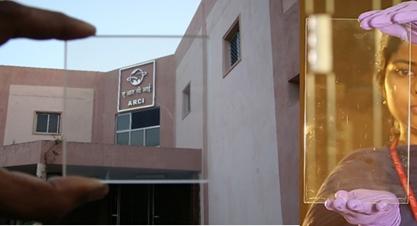In news
Indian researchers have developed transparent ceramics, reaching theoretical transparency through a technique called colloidal processing followed by simultaneous application of temperature and pressure, for the first time in India.
Details
- The material can be used for thermal imaging applications, especially in harsh service conditions and personal protection systems such as, helmets, face shields, and goggles.
- Transparent ceramics is a new class of advanced materials with unique transparency and excellent mechanical properties.
- These materials can be designed not only for transparent to visible light but also for ultraviolet (UV), Infrared (IR), and Radiofrequency (RF), giving opportunity for diverse applications.
- Though produced by different countries globally, transparent ceramics are restricted in supply as they can be used for strategic applications.
Science
- Generally, prepared from the high purity powders through a line of critically engineered processing steps, transparent ceramics needs preparation processes that will help achieve theoretical transparency by eliminating defects.
- Chemical Vapour Deposition (CVD) involving reactions of the precursors in the vapor phase at elevated temperatures and HotIsostatic Pressing (HIP) involving simultaneous application of temperature and pressure are a few advanced processing techniques generally practiced to address the above challenges.
- An enhanced diffusion process at high temperature under pressure is suggested as the possible mechanism to eliminate the defects.
Source: PIB





